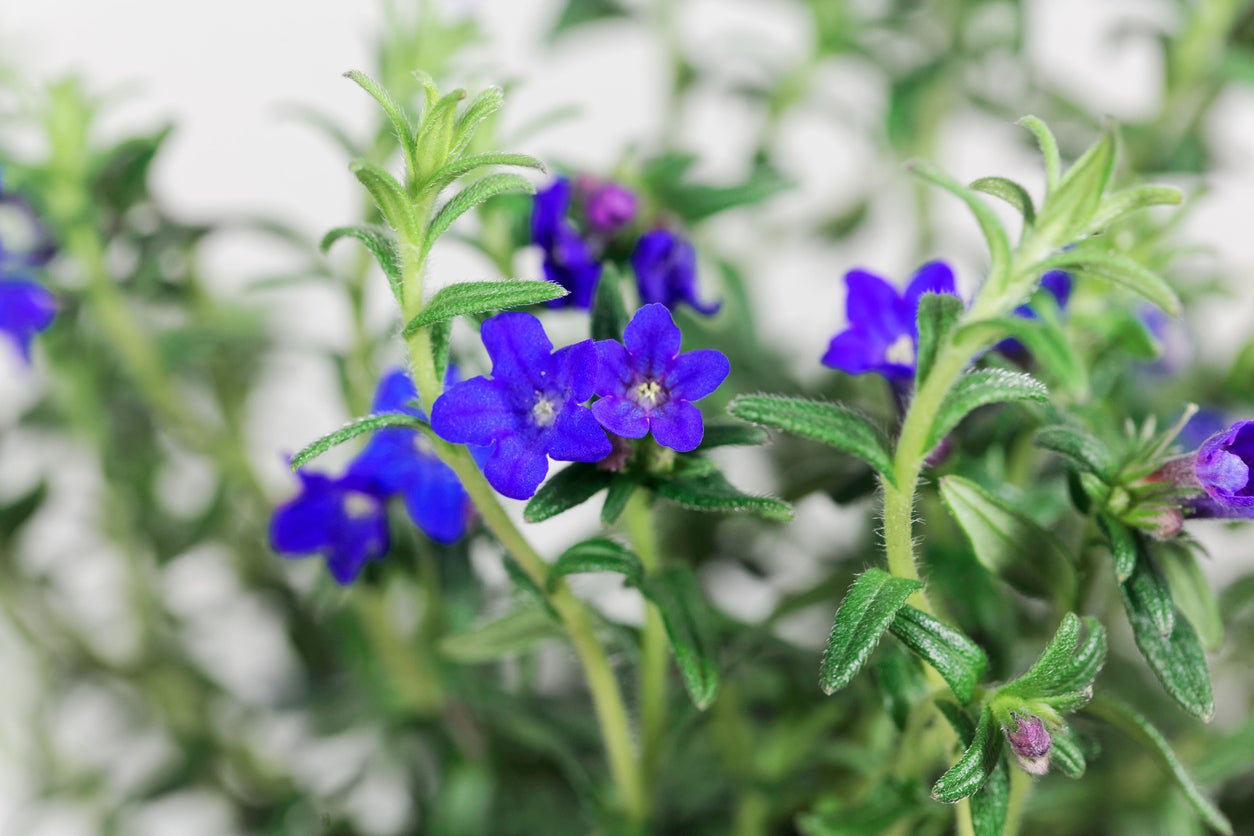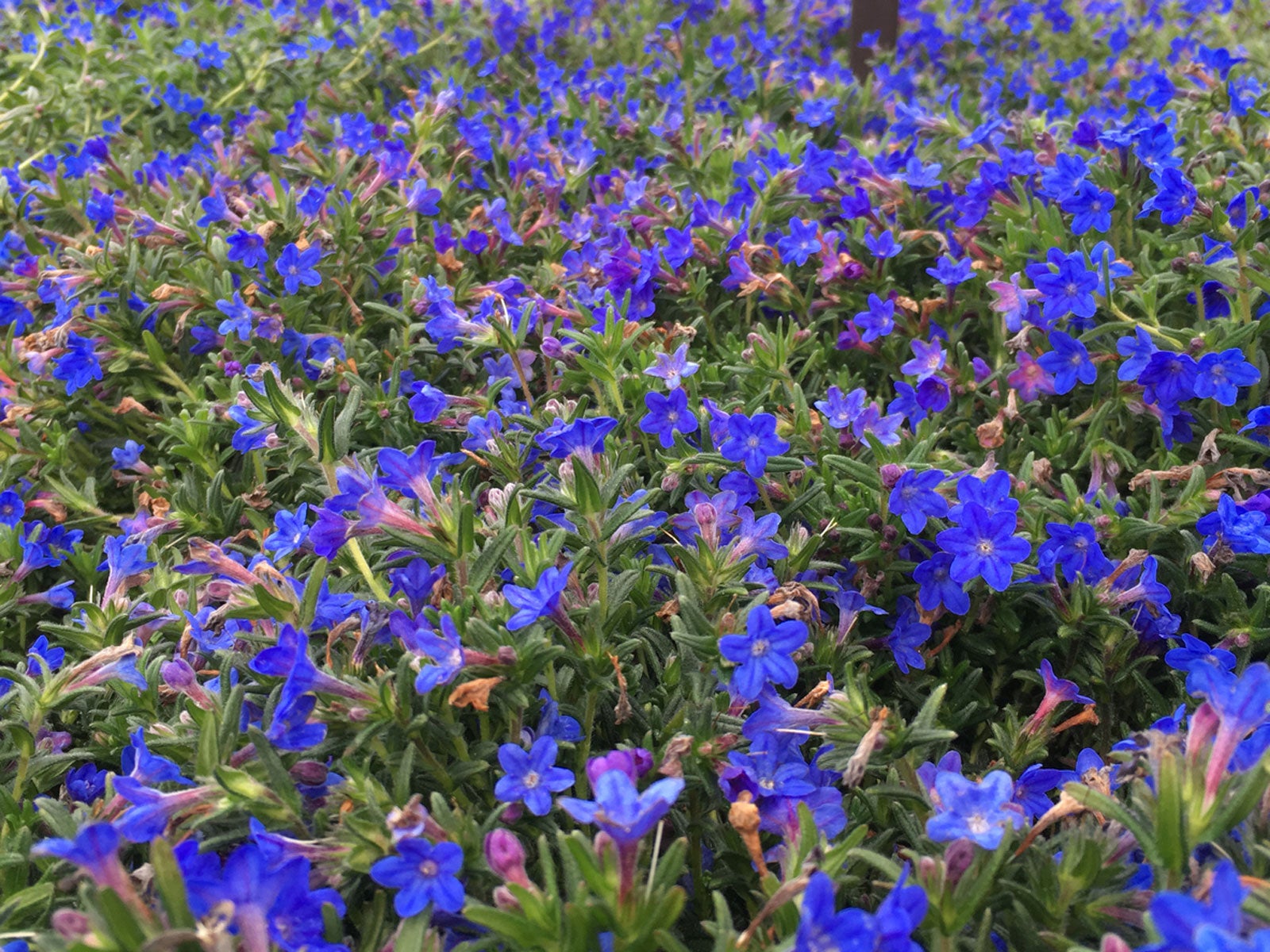Lithodora Trimming: When And How To Prune Lithodora Plants


Lithodora is a beautiful and easy-to-grow perennial plant. This low-growing flower is ideal for use in rock gardens, near pathways, and around the edges of flower borders. Producing a profusion of blue blooms in late spring to early summer, lithodora requires very little maintenance to thrive. Beyond consistent schedules of irrigation and fertilization, learning to properly trim and prune lithodora plants will help to ensure healthy plants for many seasons to come.
When to Prune Lithodora
When discussing when to prune lithodora plants, there are quite a few considerations. Pruning lithodora plants can happen at different times throughout the season. While trimming and rejuvenation are most likely to occur in the early season, the removal of overgrown plant matter in late winter will also be important in maintaining quality plants.
Since the plant is an evergreen, lithodora trimming is common in the early spring, just as winter has ended. Extended periods of cold or exposure to extreme winter weather can damage leaves and plant stems. Damaged leaves will be black and may impede new plant growth. Removing these leaves will be imperative in helping to prevent disease, and in improving the overall appearance of the planting.
Cutting back lithodora may need to be done after the flowering period as well. Cutting back lithodora after flowering can help growers to maintain plants and to ensure they remain the desired size. Tall or leggy growth can be removed at this time in order to create a more uniform appearance within the flower border.
How to Prune Lithodora
Learning how to prune lithodora plants is relatively simple. Sharp garden shears are the best tool to make clean cuts on the plant. This will be especially important in instances when the removal of a large portion of the plant will be needed.
When pruning lithodora plants, always make certain not to remove more than one-third of the plant at any given time. Doing so can severely damage the plant, and possibly cause it to die back completely.
When pruning lithodora plants, always make sure that the shears have been properly cleaned to reduce the spread of any plant diseases present in the garden. Carefully snip any damaged, diseased, or dead foliage from the plant. Make certain to dispose of the plant matter to maintain proper garden sanitation.
Gardening tips, videos, info and more delivered right to your inbox!
Sign up for the Gardening Know How newsletter today and receive a free copy of our e-book "How to Grow Delicious Tomatoes".

Tonya Barnett has been gardening for 13 years. Flowers are her passion. She has transformed her backyard into a cut flower garden, which she regularly chronicles on her YouTube channel http://www.youtube.com/@tonyawiththeflowers.
-
 Terrifically Tubular Flowers For Hummingbirds: 9 Tube-Flowered Plants To Attract Hummers
Terrifically Tubular Flowers For Hummingbirds: 9 Tube-Flowered Plants To Attract HummersGrowing tubular flowers for hummingbirds helps you create the optimum feeding conditions for your winged friends. Here are nine tubed delights for hummers
By Tonya Barnett
-
 How To Grow Hydroponic Tomatoes For Fresh Indoor Harvests – No Soil Required
How To Grow Hydroponic Tomatoes For Fresh Indoor Harvests – No Soil RequiredLearning how to grow tomatoes in water is easy and allows you to harvest fresh-home-grown produce in every season without any mess.
By Ellen Wells
-
 Lithodora Cold Tolerance: How To Overwinter Lithodora Plants
Lithodora Cold Tolerance: How To Overwinter Lithodora PlantsLithodora is a beautiful blue flowered plant. There are several varieties available and all tend to spread to make lovely ground covers. It enjoys cooler climates but is only half hardy. For more information about overwintering lithodora plants, click the following article.
By Bonnie L. Grant
-
 What Is Lithodora – Learn About The Care Of Lithodora In Gardens
What Is Lithodora – Learn About The Care Of Lithodora In GardensWhat is Lithodora? Botanically known as Lithodora diffusa, this plant is a hardy ground cover that produces masses of tiny, intensely blue, star-shaped flowers. What to know more about growing Lithodora ground cover? Click the following article.
By Mary H. Dyer